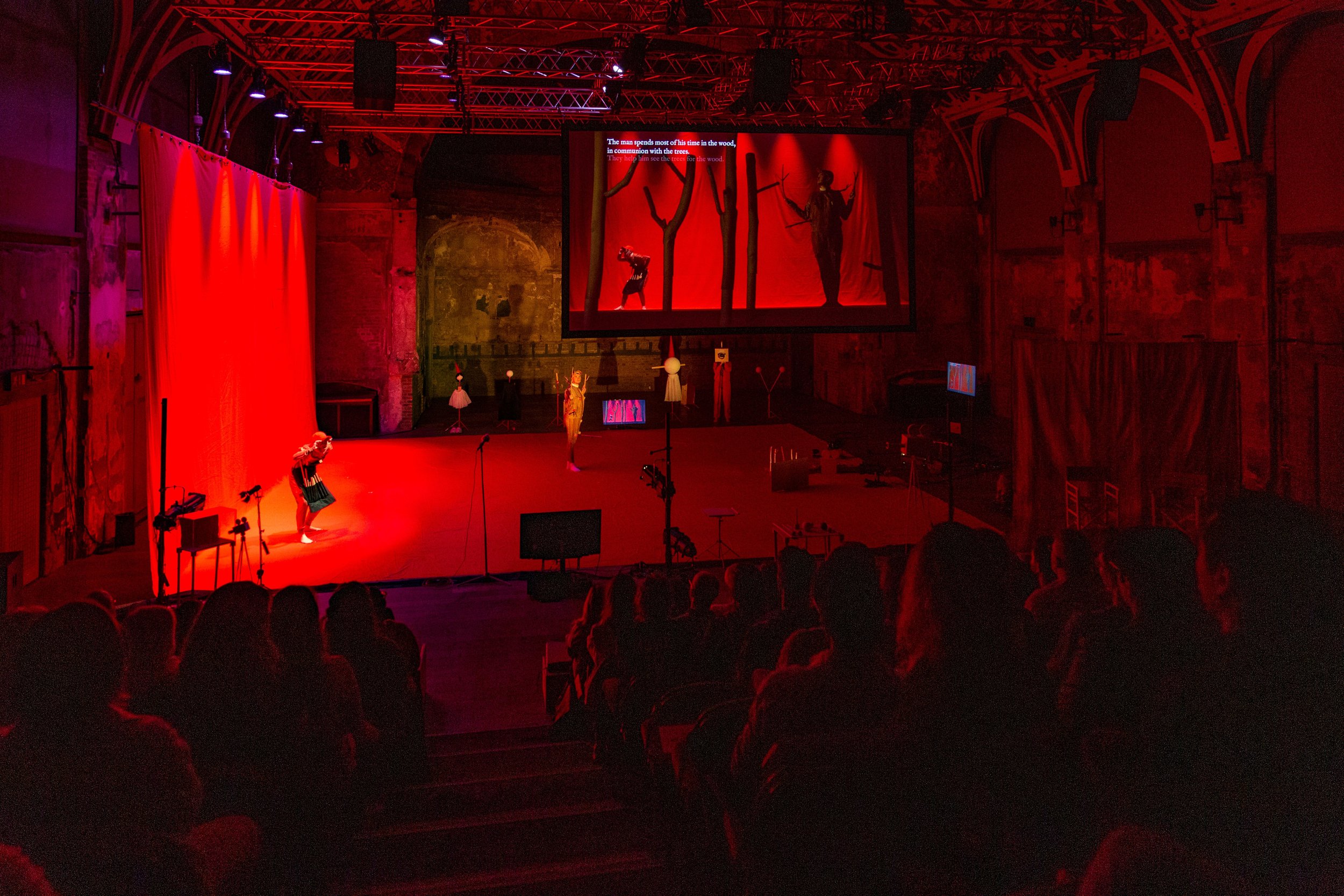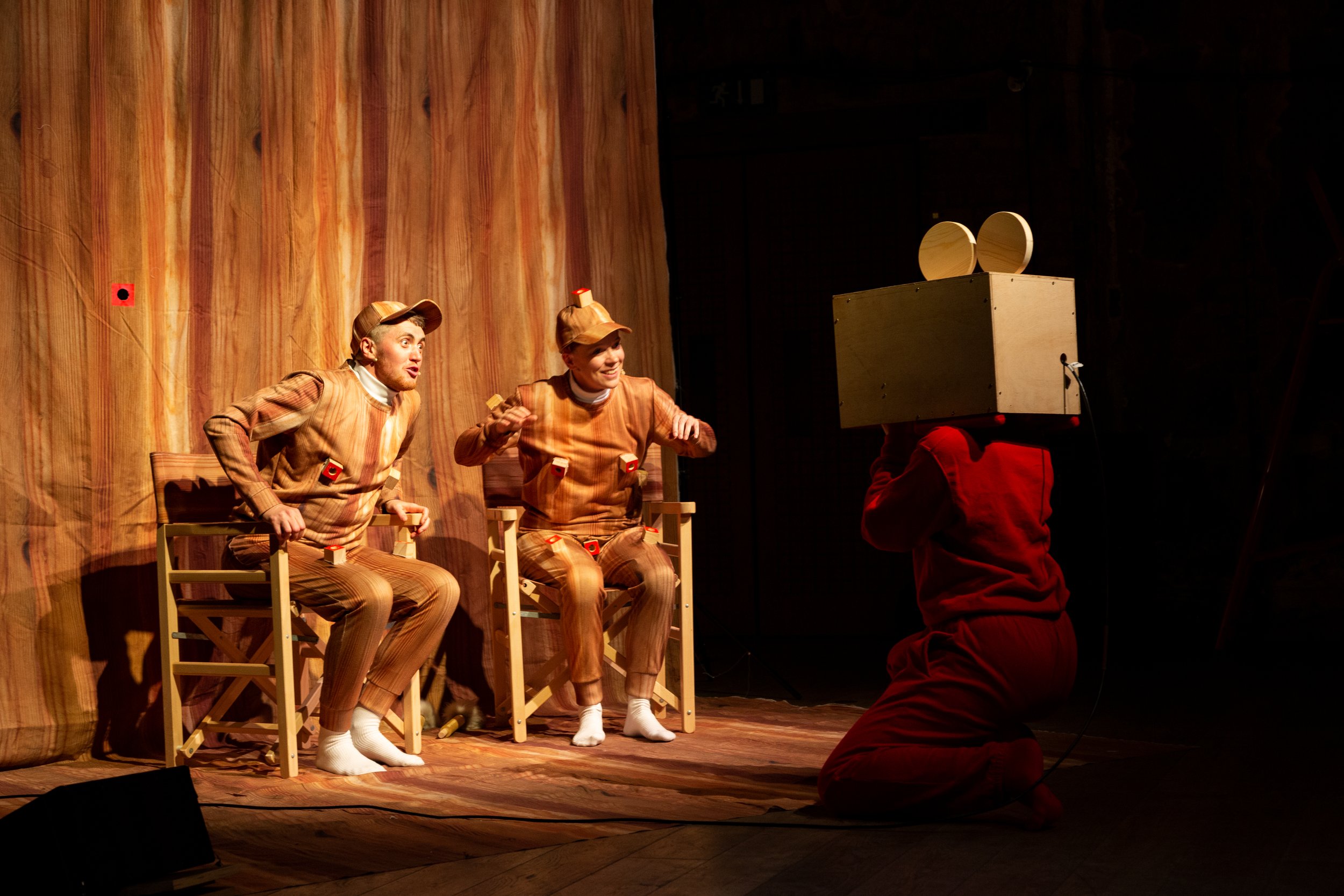The Making of Pinocchio | Rosana Cade & Ivor Macaskill
Image: Christa Holka
The Making of Pinocchio is an intimate love story framed as a behind-the-scenes look at two artists developing a new rendition of the classic tale. This modern tale is the personal story of creatives and life partners Ivor Macaskill (he/him & they/them pronouns) and Rosana Cade (they/them pronouns). Key to the narrative of The Making of Pinocchio is Ivor’s medical transition and his journey to find for himself what it means to be a ‘real boy’. As Ivor takes on the role of Pinocchio, his lover Rosana portrays the woodworker Geppetto. Ivor’s transition and Pinocchio's journey are accompanied by the complex relationship between puppet and puppetmaster, which allows Rosana to reflect on the way their love has evolved and changed. The show is beautiful and well executed, but for any queer people seeing the show, I would still recommend reading the content warnings beforehand and seeing the show while in a positive headspace.
Physical and narrative comedy is used throughout The Making of Pinocchio, including a plethora of ‘wood’ related innuendos. The production's willingness to not take itself too seriously at times allows the audience to feel comfortable and engaged prior to more profound moments. The performance is simultaneously viewable on stage and on an overhead projection showing live footage of the show from different cameras around the stage. Cinematography is used to great effect throughout the production, with fixed and human-operated cameras giving unique points of view. The added medium of film allows the performers to play with perspective in a way not possible simply on a stage. Small-scale props and careful positioning of the performers create many unique scenes, including one in which Pinocchio appears tall among a forest of sparse trees that are, in reality, only small branches placed closer to the lens.
The use of cameras and perspective lend to the idea of gender as performance. Ivor is required to fulfil certain expectations of his gender in order to become a ‘real boy’. With his partner, the audience, and multiple cameras focused on Ivor, his gender is forced to be validated externally rather than internally. While Ivor works through whether he even wants to be a ‘real boy’ (meaning cis-like in the narrative), Rosana muses on the evolution of their relationship from outwardly lesbian to outwardly ‘normal’. The pressures of their relationship seem to consume the characters as they push the limits of their partnership and imagine the countless ways in which queer love can exist.
Image: Christa Holka
When watching The Making of Pinocchio, it struck me that the show was made for a cishet audience. The discussions of pronouns, social and medical transition, costs, and waitlists are made simple for an uninformed public. While the difficulties of Rosana’s and Ivor’s relationship were well-developed, as a queer person and one who is already well-informed, I wanted to hear more from Ivor about his journey. The moments in which Ivor appears on stage alone are few and often are sparse in dialogue. Perhaps I was hoping for a more political show which could truly shock a cishet audience or, alternatively, a show made for queer people focussing on queer joy.
Image: Tiu Makkonen
There is a moment in the show in which the cameras turn, and the audience is asked to consider their own relationship to gender and their support of trans rights. The narrator asks who amongst the audience might be a ‘puppet’ themselves, puppet in this case referring to transgender people but feeling more like slang akin to ‘doll’ or ‘queen’. Instead of being a moment of introspection, I found this moment deeply uncomfortable and upsetting. In an audience largely comprised of ‘allies’ the queer viewer is made to be an outsider. After this moment, I was desperate for more analysis of the role of the audience as voyeur and passive ‘ally’ to queer movements. We now more than ever need trans stories on stage, stories that demonstrate the breadth of the trans experience, and demand attention. But ultimately, The Making of Pinocchio is not a grand story looking to shake up gender politics, it is an autobiographical show presented by two individuals telling their story.
Even as I write this review, I feel torn. By all accounts, The Making of Pinocchio is a well-produced, clever, and moving show that is worth seeing. But at the same time, I feel I need more time to detangle the narrative from my own feelings. Watching a show about a trans experience but not made for trans people left me feeling isolated and alone in the crowd. Ivor’s and Rosana’s story is not one that I will soon forget. In this way, The Making of Pinocchio has succeeded; it has made me feel at once impressed and conflicted.


